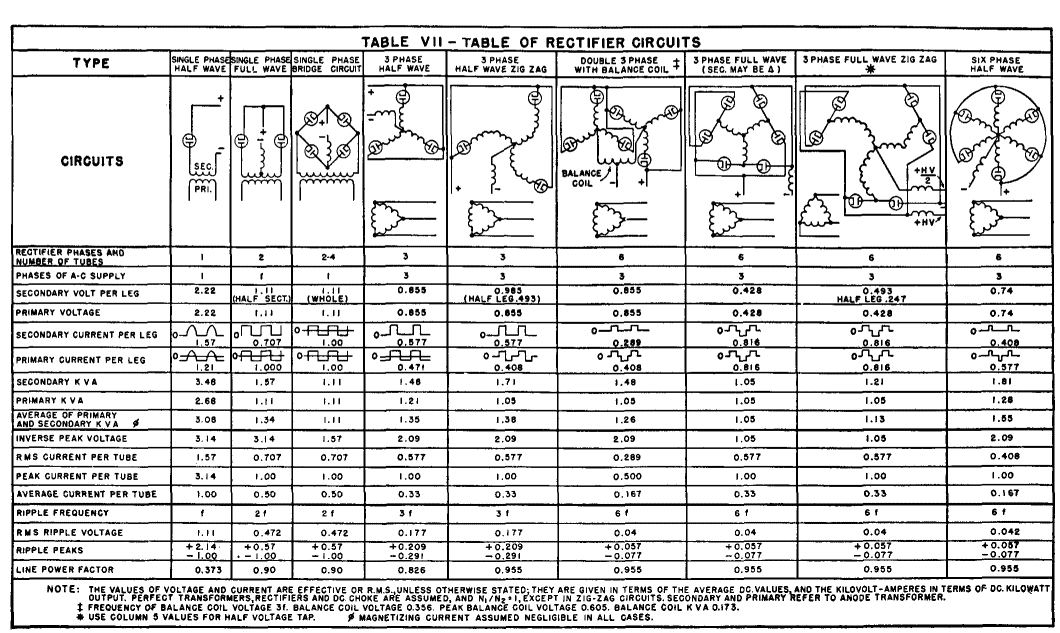| Electronic Transformers and Circuits is a free introductory textbook on transformers and related circuits. See the editorial for more information.... |

|

Home  Rectifier Transformers and Reactors Rectifier Transformers and Reactors  Rectifiers with Reactor-Input Filters Rectifiers with Reactor-Input Filters |
|||
| See also: Single-Phase Rectifiers, Rectifiers with Capacitor-Input Filters, Polyphase Rectifiers, Capacitor-Input Filters | |||






|
|||
Rectifiers with Reactor-Input Filters
Table VII gives commonly used rectifier circuits, together with current and voltage relations in the associated transformers. This table is based on the use of a reactor-input filter to reduce ripple. The inductance of the choke is assumed to be great enough to keep the output direct current constant. With any finite inductance there is always some superposed ripple current which is neglected in the table, and which is considered further in Rectifier Performance.
Table VII - Table of Rectifier CircuitsThis table is based mostly on "Polyphase Rectification Special Connections," by R. W. Armstrong, Proc. I.R.E., Vol. 19, Jan. 1931.
The difference between primary and secondary v-a ratings in several of these rectifiers does not mean that instantaneous v-a values are different; it means that because of differences in current wave form the rms values of current may be different for primary and secondary. Unbalanced direct current in the half-wave rectifiers requires larger transformers than in the full-wave rectifiers. This is partly overcome in three-phase transformers by the use of zigzag connections. The three-phase full-wave rectifier can be delta-connected on both primary and secondary if desired; the secondary current is multiplied by 0.577 and the secondary voltage by 1.732. Anode windings have more turns of smaller wire in the delta connection. Single-phase bridge and three-phase full-wave rectifiers require notably low a-c voltage for a given d-c output, low inverse peak voltage on the tubes, and small transformers.
|
|||
Home  Rectifier Transformers and Reactors Rectifier Transformers and Reactors  Rectifiers with Reactor-Input Filters Rectifiers with Reactor-Input Filters |
|||
Last Update: 2011-01-24


